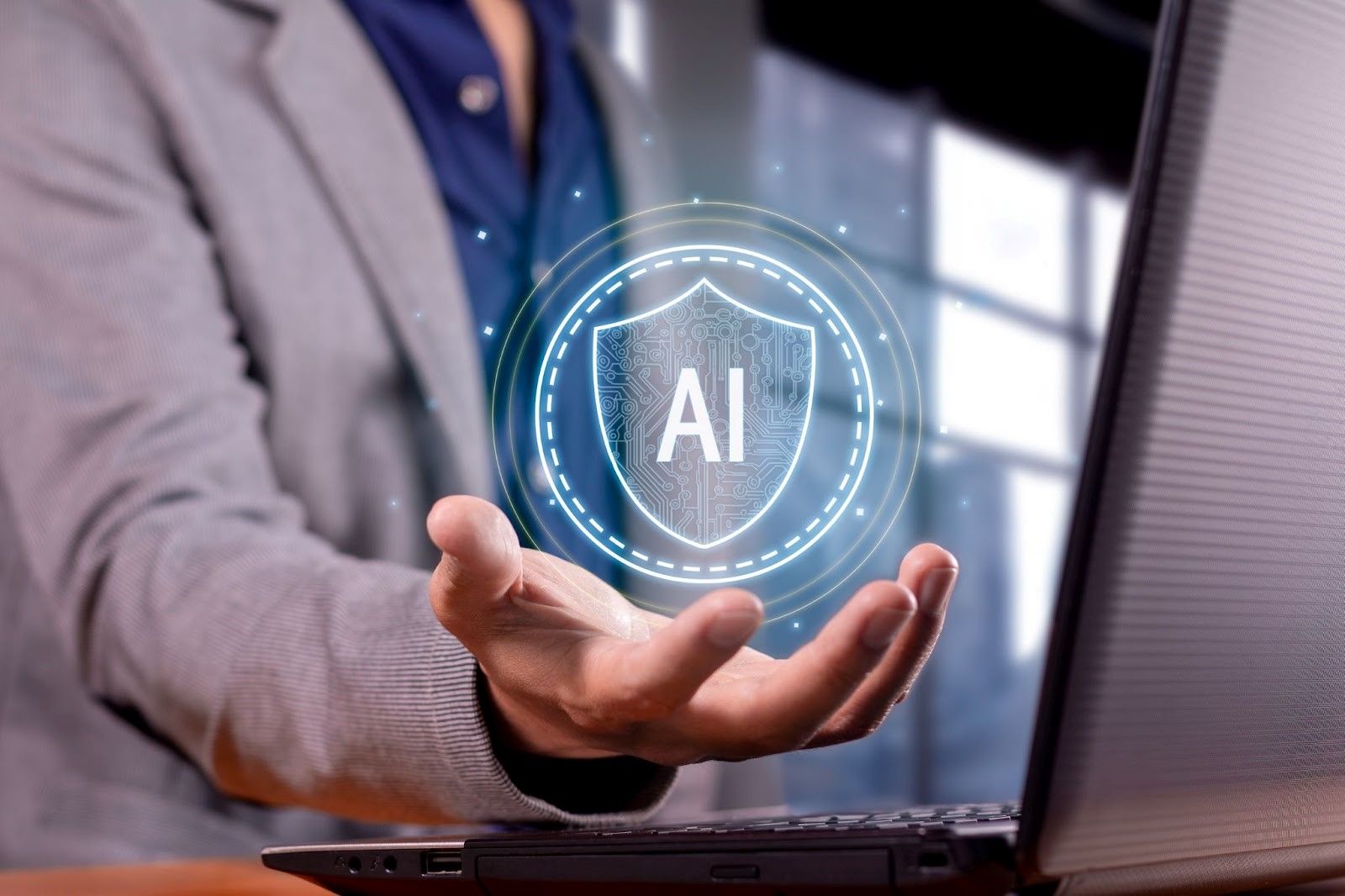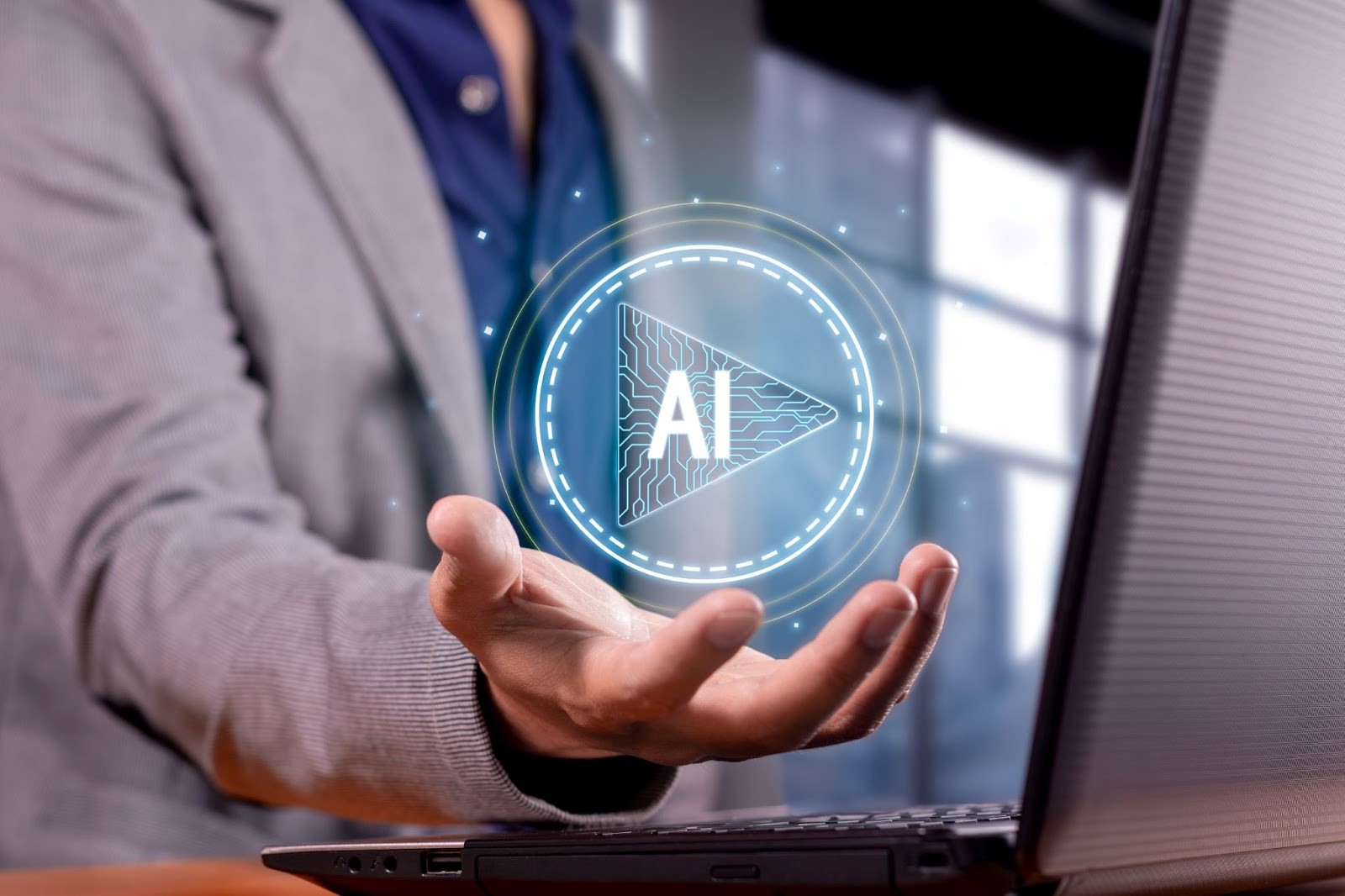Is your enterprise a part of the vibrant SaaS ecosystem? Have you heard that AI in SaaS is going to revolutionize the industry? If not, we’re glad you’re here so we can tell you all about it.
Compared to Q3 in 2022, SaaS companies invested 85% more in Artificial Intelligence SaaS tools and Machine Learning in Q3 of 2023. The AI hype has entered the phase where companies are willing to put their money where their mouths are.
And why not? The SaaS industry is expected to be valued at around $1228.87 Billion by 2032! It is only right that it invests in a technology that can help reduce costs, accelerate scalability and boost productivity.
It is clear that every player in the SaaS segment will either have to integrate AI into their business models or lose ground to their competitors.
So, how can you, as a SaaS business executive, integrate the latest AI tools with your business? What benefits should you expect from deploying AI tools to solve your problems? Can AI actually increase your profitability and push the bottom line?
Let’s find out how AI-powered SaaS companies are taking over the industry.
What Does AI Bring to the SaaS Table?

If you’ve ever used the Google App to search for a gas station near you, you’ve already experienced the power of AI in SaaS. Google has been using basic Language Learning Models and Machine Learning since 2001.
However, the current version of AI tools has far more advanced capabilities. The latest AI tools can think, remember, contextualize, plan and act like human beings. They can create images out of information or summarize images in words.
From ChatGPT to Dall-E and Grammarly to Google, all SaaS providers are powering their products with AI tools. But why is this? What benefits does AI bring to the SaaS Industry? Here are some of the advantages that SaaS companies are looking to harness through AI integration:
1. Efficiency

The bottom line determines success in every segment of the economy, and the SaaS industry is no exception. AI tools can already perform several human tasks with great effectiveness. In fact, they can perform several computations and complex calculations better than humans.
If an AI tool can replicate human behavior or help you reduce HR attrition, the money is saved and goes directly back into your pocket. You can then reinvest that into expansion to conquer new markets or innovation to retain existing customers.
But AI tools go further than that. They can go into minute details. For instance, Zoom is using AI tools to increase the clarity of its videos. If video quality is an issue for 2 out of 10 customers, and the AI tool solves it for even one of the two, it has reduced your potential churn rate by 50%!
As we will see, AI’s impact goes beyond sharpening your products and their features. You can embed AI tools deep within your business operations to increase efficiency.
2. Scalability
Once your SaaS platform is stable, the next step is to grow. If you don’t expand, you stagnate. This is why businesses are often called sharks – if they don’t keep moving forward, they drown. But with AI, you can escape this loop of constant growth by becoming a whale that only needs to periodically surface for some oxygen. And AI will give you that oxygen.
One AI tool can replace a 100-person strong customer service center. Just ask the Amazon Seller Service! Or imagine yourself – who is easier to train, an AI Chatbot or a hundred people with diverse backgrounds and different life experiences? The answer to this question is why and how SaaS companies integrate AI into their expansion plans.
Earlier, an expansion plan would have required you to hire a hundred employees in ten different departments. Now, you can accomplish the same with a lifetime subscription to an AI Chatbot! And you can always hire ten competent employees to ensure the chatbot is functioning smoothly!
Thus, with AI, you can scale your SaaS company to rival established giants in your industry. And all this without even 10% of their workforce! Is it any wonder that SaaS companies are pumping cash into AI tools?
3. Foresight
AI that earlier used to finish our sentences is now correcting them. It can even rewrite incorrect sentences without changing the meaning. However, the latest AI goes one step further. It can understand and decipher patterns from large data.
Ice cream taste? AI can sort them by user preference! Soil samples? AI tools can predict their fertility. Demand trends? AI will tell you when you should stock up. Weather patterns? AI tech will tell you whether you should carry an umbrella ten days from now!
AI’s ability to understand patterns in human behavior helps SaaS companies sell order to a chaotic world. Be it sports analysis, financial modeling or wine sampling, AI can help simplify everything.
Its foresight is particularly valuable to companies growing at a breakneck speed. Often, the fall of such companies is as rapid as its rise. AI can help you understand the reasons for your failure as much as it can tell you how and where to succeed. Its ability to forecast downturns is as valuable, if not more, than its ability to direct growth.
4. Security

In the world of SaaS, data translates directly into dollars. So, for SaaS enterprises, safeguarding data is the same as protecting wealth. Just ask X, formerly Twitter, or Ticketmaster, America’s number one ticketing agent. In the last year, both companies reported data leaks that have affected millions of users. Ultimately, it must have driven at least some of them away from the platforms, resulting in a loss of revenue.
Data leaks and security breaches often go undetected until they happen. And by then, it’s too late for your SaaS company to do anything about them. Here’s where AI can help. Unlike humans, it doesn’t blink or sleep a wink. It provides round-the-clock vigilance against those threats that could compromise your users’ privacy.
Oracle and DocuSign are two SaaS companies that leverage AI tools to guarantee safety and security to their users.
5. Compliance
Quality control and compliance are cousins of security. Both equally affect your company’s or your clients’ bottom lines. Imagine you’re an F&B enterprise, a financial institution or a warehousing merchant. Failing to provide compliance and quality assurance would destroy your reputation!
This is where AI can help secure the breach:
- Image recognition can improve product acceptability and detect expired products.
- Big data analysis can expose fraudulent financial statements.
- Spectroscopic imaging AI can detect harmful chemicals in F&B products.
Thus, wherever compliance poses a threat, AI can neutralize it. AI tools can thus eliminate errors that creep into human compliance mechanisms. It can also create new levels of compliance that are far more secure and beneficial.
6. Development
AI’s impact on product development for SaaS companies is indirect.
First, several AI tools are packaged as SaaS. Consider Grammarly. No human is sitting behind the screen, checking every sentence we write. Nor is Grammarly a person behind a desk waiting for each sentence to be typed so it can jump in with suggestions.
Rather, Grammarly is a combination of a Language Learning Model and the concept of Machine Learning. It compares each sentence with the rules of the English language to provide users with meaningful suggestions.
Thus, you can’t ask Grammarly to develop an idea for another language-correcting software service. That isn’t its purpose! However, as a SaaS company, you can develop tools that can tell some other company how to develop new products!
Consider the partnership between Microsoft and Carlsberg. Their joint venture was to map beer tastes and compositions to create new types of beer! Similarly, Climax Foods is harnessing the power of generative AI to create new types of cheese and culinary experiences.
Even though you, as a SaaS company, may not want to pivot to the F&B industry, you can certainly provide the technology for your clients to do so.
Thus, AI has several benefits in store for the SaaS industry. It can help conserve resources, maintain supply chains and increase productivity. But enough about the benefits, how can you, as a SaaS executive, integrate AI into your enterprise? Find out below.
How Can AI Transform Business Operations?
The real strength of AI is its ability to change the scope of your business. Its potential is limitless; its applications stop only where the limits of our imagination begin. How can you go about using AI to positively influence your business operations? Here are some of the departments that AI can instantly revolutionize:
1. Unique User Experiences
A SaaS company’s main product is the experience it generates for its users. Further, 80% of customers say that the experience a company provides is as important as its products and services. Put yourself in your client’s shoes – what would be the first thing they would expect from you as a SaaS company? Good customer support!
And here is where AI can help the most. AI-powered tools can help you offer support around the clock. Now, you can cross continents without leaving your desk. Here are three ways in which you can utilize artificial intelligence SaaS tools to enhance your clients’ experience:
- Customer Service

AI-based chatbots are changing how we imagine a customer service experience. AI applies the principle “this meeting could have been an email” or “this email could’ve been a Slack message” to customer queries. Thus, it can solve or respond to user queries faster than a human agent.
Let’s say you’re trying to register a complaint about a broken feature on a SaaS platform. You’ll need to speak with a representative who:
- Needs to understand the context of the complaint,
- Troubleshoot the feature that’s not working and
- Provide you with viable and instant solutions.
If the troubleshooting doesn’t work, they’ll provide you with a timeline for a fix or an on-site visit to fix the issue.
An AI chatbot can do these things without wasting valuable time. Combining machine learning and contextual understanding, it can give customers instant, useful responses. Where a human needs at least five minutes to listen, understand, troubleshoot and respond, the trained AI needs only a minute.
Imagine how valuable saving four minutes per customer query is to your company and your client!
And it’s not just SaaS providers that are seeking AI solutions to user queries. Online retailers, restaurants and telecom companies are also looking for cheaper CRM models. So, AI chatbots are not only solutions for your clients but also products in themselves!
- Personalization
With technological advancements, SaaS customers expect increasingly personalized experiences. AI is very useful here.
First, let’s analyze how a human can personalize experiences. As a SaaS provider, you’ll have access to a client’s usage history and cookie data that you collect from them. You’ll know what websites they like and which ones they don’t.
But on what basis can you suggest personalization for one client without knowing what other clients like this one have preferred? So, human-generated personalization suggestions require even more work. You’ll need to:
- Know how a user profile compares with other user profiles,
- Deduce the common traits from lists of several clients,
- Compare their preferences with the features you currently have,
- Understand how these preferences can affect future choices,
- Explore what features you can create that clients will prefer,
- And finally, suggest them in a user-friendly way.
Thus, personalization is both relative and unique. Personalizing one experience is impossible without knowing the success of other personalized recommendations. Add to this the biased nature of human experience, and we begin to see the challenge of personalized experiences.
Thankfully, AI-based tools can deduce trends from huge sets of user data. AI indeed functions on the same mathematical and statistical models humans utilize to understand big data. However, their task is easier when human beings only have to develop the models rather than deliver outcomes for every user. Perhaps even more enjoyable!
Thus, as a SaaS company, you only have to train the AI. Then, it’ll deliver personalized:
- Restaurant recommendations,
- Healthcare services and
- Shopping suggestions.
And it’ll accomplish all this without draining time or resources for you or your clients. In today’s market, if personalization is the name of the game, then AI-based personalization is the winning play!
- Usage Stats
SaaS users are increasingly focusing on their usage statistics. Data can measure both dollars and success. It can tell users where they can improve and how they have been performing. But gathering, aggregating and providing user data to every client and each user within a client company can be tough, right?
Wrong! AI is changing how your SaaS company collects and delivers usage statistics to your clients. Once you’ve automated this through AI tools, it’ll send weekly, monthly, quarterly and annual reports about these statistics. Your clients can then analyze the data and extract insights to boost their productivity.
An example is Grammarly, which delivers weekly and monthly user statistics. Users can even compare themselves against other writers and see how they ranked amongst other Grammarly users!
2. Precise Marketing
Generative marketing is one of the most popular uses of AI. From NotCo to Nestle, companies are using generative AI to develop product ideas and launch marketing campaigns.
There are two major ways in which AI can help with marketing:
- Generative Experiences

When it comes to generative experiences, Google leads the way. It plans to transform Search by allowing users to plan events, brainstorm ideas and create images. Mars Inc., one of America’s largest private companies, is another example. It plans to overhaul its customer research using AI technology so it can know precisely where to market its products.
Generative AI can help users have new experiences with your products. They can create custom candy flavors, generate images through words and experience art like never before. These tools can be helpful for marketing – prospects can interact with sponsored infographics and images.
For instance, sports analysis services can let users view the statistics of their favorite players. They can even help users predict the weekly form of different players. This will help them build better fantasy sports teams or make more informed bets.
Here, AI’s tasks are not limited to making analytical suggestions and predictions. It can also generate poster images that will attract the most users. It can even tell you which users will yield more revenue – the betting crowd or fantasy football players.
- Engaging Content
Creatively crafted content is the basis of good marketing. Be it a copy or a blog, nothing conveys authenticity and sincerity more than easy-to-access content. Producing and publicizing good content tells your viewers you understand their problems.
Good content is thus empathetic. It doesn’t deliver a product but tells the users you can help heal their pain points. And when it comes to marketing campaigns, talk can be expensive! A failed marketing campaign won’t just lose you money; it can even drive prospects to competitors.
Here, AI can help in two ways.
- First, it can generate the basic content based on the preferences of a target audience. Humans, with their biases, can often overlook information that is starting them in the face. The AI’s approach will be objective. It can create balanced content to appeal to the average user within your customer profile. AI tools can also generate multiple options without multiplying the effort or the resources. You can then choose the one you find most appealing.
- Second, AI can help your marketing team use their time efficiently. Even the best designers will work better if they have a basic image they can further develop. AI can thus provide meaningful templates that reduce the time it takes to create and launch marketing campaigns.
Even if a campaign isn’t successful, AI tools can also gather quick feedback. So, you can turn around and launch another campaign without losing valuable ground or time.
3. Targeted Sales

Marketing isn’t the only place where AI can help your SaaS business. If your sales cycles are too long, AI can shorten them. If they’re already concise, AI can tell you what’s driving the success. It can even combine sales and marketing with tools like:
- Cold emails,
- Automated calls to retail users,
- Mass-email campaigns,
- Account-based marketing prompts and much more!
Here are three ways in which your AI in SaaS companies can drive sales cycles:
- Deciphering User Clusters
By automating big data analysis, AI can tell you where your users and clients are concentrated. Thus, you can create marketing and sales campaigns that cater to these specific audiences and locations. Automation further helps you keep track of the cluster – whether it is growing or declining.
- Guiding Expansion
So, your SaaS business has consolidated its gains in a given market segment. What’s next? Expansion, be it in a different geographical cluster or through more features you can provide to your existing customers. AI can help you estimate:
- The cost of expansion into different customer segments,
- The cost of acquiring new customers,
- The value that your existing clients are generating,
- The value you could lose because the competition is making steady moves.
Thus, AI tools can form the backbone of your expansion strategy.
- Predicting Purchase Motivations
AI can also aid your sales strategy by predicting the threshold at which your customers will purchase or subscribe to your services. It can study every user’s buying journey to understand the path they have taken before making the buying decision. It can tell you things like:
- How many times did they visit your website?
- Where did the subscriber hear about your services?
- For how long have they faced the problem that your service has solved?
- When are they likely to recommend your service to other users?
Such questions and their answers will help you understand the nature of your sales cycle. It will also tell you which segments you should target. You can also train AI to combine the answers to these questions and create a score you can assign to each lead, prospect and customer. This way, you’ll know whether you will likely convert a lead or lose a client!
4. Smoother Supply Chains
As our definition of the market has expanded, so have our supply chains. Your SaaS business could be using cloud computing servers thousands of miles away. Similarly, your SaaS clients could be another thousand miles away from both you and your servers.
So how can AI help you oil rusty supply chains? Demand and supply are the two sides of the same coin you want to earn for your SaaS business. And AI can help you understand both of them!
- Developing Demand
The primary task for any SaaS business is not just to create a useful service but also to develop demand for it. Here, AI can be the service itself. However, it can also help you scout demand. After all, what better way to demonstrate the usefulness of AI in SaaS than to deploy it yourself?
Estimating demand by understanding user clusters is one way to take advantage of its capabilities. Another way is to train your AI to study the competition’s user base and mount an attack by offering similar services at a lower price.
Either way, ML, LLM and big data analysis can guide your pursuit of developing demand for your SaaS business.
- Delivering Supply

A very realistic scenario is that you spread your business like butter scraped over too much bread. It wears thin and offers no taste. Here, when AI helps you estimate the demand for your product, it also prompts you to react and control the supply of your services.
- How much server space should you keep in reserve?
- What ratio of human representatives to clients should you maintain?
- When should you roll out new features to retain customers?
AI can help you answer all these questions and even generate some more!
5. Human Resource Harmony
A common complaint of SaaS customers is a lack of cohesion within the supplier’s organization. To them, each department feels like a different company altogether. So, how can AI help you harmonize your teams?
- Reducing Attrition
Lack of continuity often stems from high attrition. And, in large part, this is neither your fault as an employer nor theirs as an employee. Relationships and priorities change. Old chapters end, new ones begin. AI can’t help you change human nature or the process of change.
But it can certainly help you plan for organized change. It can tell you:
- The average span of an employee at your organization,
- What incentives can best coax and retain employees,
- How much it costs to hire a new employee,
- The time it takes for a new employee to embed themself within your company,
- The loss in productivity you suffer due to a high attrition rate.
Based on these insights, you can follow robust hiring strategies. You can also plan for contingencies and create better incentive structures. You can also ask AI to suggest and create job profiles that can fill the gaps within your organizational structure.
Thus, AI helps you understand your organization as an ecosystem. You can then optimize this space to allow your employees to function optimally.
- Simplifying Communication

AI can solve the problem of broken interdepartmental communication rather easily. Just ask Slack! You can use its AI tools to send reminders to your employees about meetings, deadlines and daily tasks.
Automated communication can simplify coordination. An AI tool can help you regulate communication that you otherwise would’ve had to remind employees yourself. Thus, it can ensure that your employees follow a schedule to avoid delays or breakdown of communication.
Lastly, AI is also remaking project management strategies. No more coordinating with individual employees or group messages! AI platforms are creating project chains that visualize product and output flows. Thus, every member of your team can see:
- Whether a project is moving in the desired direction,
- If it is moving within the estimated deadlines,
- Which member is performing what task at any given moment,
- When it is expected to be completed.
AI thus helps recognize the common features of every project to make coordination seamless!
These are some of the ways in which AI is revolutionizing the SaaS industry. AI SaaS products will reach summits that ordinary SaaS products cannot imagine. However, AI powered SaaS products are not without their challenges.
Let’s examine some problems you might encounter while integrating AI into SaaS businesses.
AI in SaaS – Some Challenges
The rise of AI in SaaS is meteoric. Top AI SaaS companies are making huge gains and reaping the early-mover advantage. However, AI’s ascent to the SaaS summit is still nascent. We should remain prudent and understand the challenges to AI in SaaS as much as we appreciate its benefits. Let’s briefly look at some of AI’s obstacles in its SaaS-conquering journey.
- Bias

AI doesn’t grow on trees. It can’t be cultivated on farms. Humans develop it through human reasoning for human use. This basic fact underpins every AI tool. It is both a blessing and a curse.
Salesforce research suggests that clients trust only those AI tools that are under human supervision. On the other hand, the entire point of AI is to eliminate human bias and drive objective decision-making.
Thus, AI in SaaS must walk on a knife’s edge when balancing objectivity with a human touch. Researchers have warned of and found several discriminatory practices being condoned by AI.
Thus, you should adopt an ethical approach when integrating AI in SaaS products. Be transparent in your approach. Share as much as possible with your clients without giving away proprietary information.
While the benefits of AI in the SaaS industry are evident, implementing AI successfully comes with its challenges. One of the major challenges is data quality and availability. AI algorithms require vast amounts of high-quality data to produce accurate results. SaaS companies must ensure data cleanliness and address data gaps to derive meaningful insights from AI-powered solutions.
- Echo Chambers
Just as AI can show you the objective truth, it can lead you down rabbit holes. An AI-driven marketing campaign can fail if it is not trained to understand the context of buying decisions.
For instance, let’s say you have created a supply-chain management tool for a sporting goods store. It observes an uptick in demand for soccer balls in July 2024. Naturally, it suggests that the store should order more balls in June every year to cope with increased demand.
This strategy could work for a couple of years. But by 2027, the demand for soccer balls will have dropped by 50% or more. The sporting goods store will be stuck with an oversupply and have to liquidate its inventory for 50 cents on the dollar.
Who’s to blame for this scenario?
The AI which didn’t understand the context of the increasing demand for soccer balls. It didn’t consider two successive global sporting events – the Copa America and the Football World Cup – as driving the demand for the product. And it missed the crucial detail that these events won’t be held in the United States every time!
Thus, AI-driven decisions can often drive companies into the ground if they fail to understand the context of the suggestions.
- Resource Costs and Perception
Another challenge for AI is the cost of integration. And we’re not talking just about the financial cost of subscribing to AI tools. We’re not even considering the cost of research and development required to develop AI models.
We should rather take into account the environmental and ecological cost of the machinery required for the AI revolution. Government initiatives or future returns might subsidize the direct cost to your business. However, long-term customer faith is increasingly being determined by ecological concerns.
Thus, when including AI in SaaS offerings, you might create a pain point at the cost of empathizing with another. Ensure that you calculate the cost of AI integration holistically. Don’t compromise long-term sustainability for short-term revenue. Bide your time and grow gradually.
Let AI Revolutionize Your SaaS Enterprise
Top AI SaaS companies want to diversify their operations with AI’s potential. Its predictive power and analytical capabilities can accelerate your SaaS company’s expansion plans.
You can trim supply chains, adjust to sudden upturns in demand and create brand-new software offerings. We’ve also seen how AI in SaaS companies can drive compliance and increase security.
AI can read the tea leaves of your business and help it navigate turbulent times. It is the oracle of your company. At LeanSummits, we specialize in helping SaaS companies capitalize on AI’s visionary capabilities.
If you, too, want to ride the wave of AI to conquer the market of the future, schedule a free consultation right away! We can help your SaaS company chart its course to smooth AI integration.
Let’s take on the challenge of sharpening your competitive edge with cutting-edge AI tools right away!



